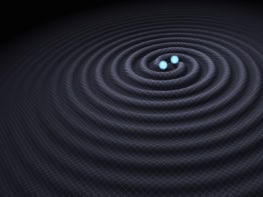Neutron-scattering facilities exemplify the changing face of big science, as Robert P Crease discovers on a visit to Oak Ridge

“They do nuclear work there and jam your GPS,” my taxi driver warned me as we drove from the airport in Knoxville to the Oak Ridge National Laboratory (ORNL). Nestled in a lush green area between the Cumberland and the Great Smoky Mountains in the middle of Tennessee, it was here during the Second World War that the US created fissionable material for the Manhattan atomic-bomb project. Informing me he’d have to drop me off at the gate, I asked my driver to go in anyway and leave the device on. He did – and the GPS worked fine.
With its huge, federally funded scientific facilities, the Manhattan project helped to usher in a phase change in physics from small-scale efforts to what became known as “big science”. The term in fact was popularized by ORNL’s then director Alvin Weinberg in an article he wrote for Science in 1961 (134 161). Big science was his term to describe how particle accelerators and reactors were fostering a seemingly unstoppable rise in the scale of scientific facilities, instruments and budgets, with increasingly specialized researchers working in ever-larger collaborations.
Many physicists began to embrace the moniker “big science” to enhance the prestige and funding of high-energy physics. But Weinberg felt that physics as a whole did not share that culture. ORNL and other national labs in the US and elsewhere, he pointed out, had a more varied character, focusing as they did mostly on materials science and condensed-matter physics. For this reason, he lamented the enthusiasm with which many of his fellow scientists were greeting big science.
In “new big science”, large facilities and labs are increasingly supporting a “research ecology”, consisting of relatively small instruments, experiments and collaborations.
There is, however, another phase change going on in science that shows that Weinberg’s instincts were sound. In this latest phase change, which historians are calling “new big science”, large facilities at ORNL and other labs are increasingly supporting a “research ecology”, consisting of relatively small instruments, experiments and collaborations. Research is growing not so much bigger as more complex.
Small teams interact in ever more interactive and networked ways. The change manifested itself first in the 1970s and 1980s at light sources, where one beam port often began to serve many different research projects and one project often took place at several different ports. But the flexible collaborative research of new big science is now also apparent at neutron facilities, such as at Oak Ridge.
Spalls and thrills
I had come to Tennessee to see the new big science in action at the Spallation Neutron Source (SNS), the largest facility to have been built at Oak Ridge since the Manhattan Project. Ground was broken for the $1.4bn project in 1999, and it began operating in 2006. As I toured the SNS, instrument scientist Bryan Chakoumakos explained how its linear accelerator runs pulses of protons up to 1 GeV before slamming them into a mercury target, which splits or “spalls” into many small pieces.
This spallation process creates sprays of neutrons, which spread down instrument pipes that surround the target, like the gaps between slices of half a pie. The SNS has 18 beam pipes, nine on each side, sometimes with more than one instrument on each pipe. Consisting of different kinds of diffractometers and spectrometers, those instruments are placed a dozen or more metres from the target, partly because the resolution increases with distance and partly to fit in blocks that shield users from radiological hazards.
Spallation sources, Chakoumakos told me, have given neutron research additional scope and flexibility, making it useful not just for condensed-matter physics but for chemistry, biology and engineering too. Industrial participation is growing as well. Automotive companies have inserted batteries and even entire engine blocks into the SNS’s neutron beams, while aviation and engineering companies use them to study new alloys.
Industrial participation – small-scale research for applied purposes at a large facility – is one hallmark of the new big science.
Industrial users at the SNS range from large corporations whose researchers are experienced with the machine and how it works, to small firms for which the SNS staff has to perform “concierge service”, helping them set up and use the instrument and interpret the result. This new industrial participation – small-scale research for applied purposes at a large facility – is one hallmark of the new big science.
A further sign is the increasing interaction between research at facilities such as the SNS and work at light sources elsewhere. One reason for this cross-disciplinarity is the ability of neutrons to investigate the magnetic structures of materials. Another is that neutrons can easily locate hydrogen and other light elements in, say, proteins, which is hard or even impossible with X-rays.
“The large fraction of users at the powder diffractometers collect data at both X-ray and neutron sources,” says ORNL’s associate director Paul Langan. The use of cold neutrons – with long wavelengths – has further expanded neutron research into fields such as chemistry and biology.
The critical point
In the new big science, the practice of research is not necessarily getting bigger in scale – it’s also becoming more flexible and interactive. Growing institutional interactions are developing between facilities – with, in the case of the SNS, five other labs building different major parts of it. This kind of co-operation has been increasing among the US national labs and is now far bigger than when the SNS itself was built. Furthermore, small research groups, many involving industrial participants, are thriving without needing ever-narrower specialization.

Why solid-state physics is like a Star Wars plot
Another key sign of the new big science is the increasing collaboration between neutron researchers and those using X-ray instruments at light sources, such as the Advanced Photon Source and the National Synchrotron Light Source at the Argonne and Brookhaven national labs respectively. Such interactions indicate a big change in the way materials scientists do research at user facilities. Those interactions, in turn, also create new challenges for scientists, science educators, managers and those who synthesize the knowledge and information that are generated.



